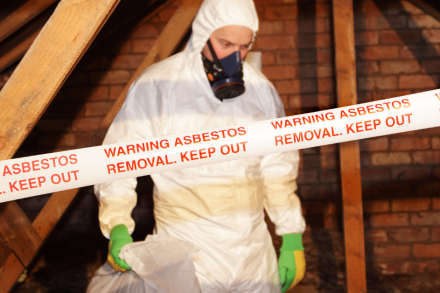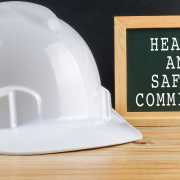
If you’ve performed a survey and uncovered materials containing asbestos in your property, it’s essential to take appropriate action. Addressing the situation promptly ensures the safety and well-being of everyone in the building while keeping your property compliant with regulations. Mishandling these materials can lead to serious health risks and costly penalties.
Read on to learn about the hazards of asbestos and how to deal with any you may find during any renovation or demolition projects.
What Is Asbestos and Why Is It Hazardous?
Asbestos refers to naturally occurring minerals once widely used in construction and industry for their durability and resistance to heat and fire. Commonly found in older homes, offices, and facilities, these materials may be lurking in insulation, roofing, flooring, and adhesives.
The danger arises when these materials are disturbed, releasing microscopic fibers into the air. These fibers can remain airborne for extended periods and, when inhaled, may lead to severe health conditions like mesothelioma, lung cancer, and asbestosis. Unlike many other hazardous substances, airborne fibers have no detectable odor, making the threat insidious.
The risk of harm depends on several factors: Quantity of exposure: Higher concentrations increase the chance of harm. Duration of exposure: Short-term exposure is less dangerous than long-term. Condition of materials: Friable (crumbly) materials are more likely to release fibers. Individual factors: Smokers face a significantly increased risk of developing lung cancer when exposed to asbestos.

Is The Presence of Asbestos Always Dangerous?
The mere presence of asbestos-containing materials doesn’t necessarily mean your property is unsafe. Intact and undisturbed materials typically don’t release harmful fibers. However, cracked, deteriorating, or water-damaged materials can become friable and hazardous.
For example, the following situations may result in the release of fibers: Sanding or scraping old vinyl flooring, linoleum, or adhesives Removing deteriorating transite siding or roofing shingles Tampering with loose-fill vermiculite insulation Scraping old textured ceiling materials or plaster
If you notice damage such as cracks, tears, or wear on these materials, avoid touching them. Instead, consult a licensed professional who specializes in assessing and managing these hazards.
What To Do If Hazardous Materials Are Found During A Renovation?
Dealing with hazardous materials like asbestos requires a structured approach:
Inspection and Testing Hire a licensed professional to conduct a thorough survey. They’ll identify which materials contain asbestos and evaluate their condition. Sampling and laboratory testing are key components of this process.
Developing a Management Plan If hazardous materials are found, your inspector should provide a detailed report outlining the type, location, and condition of these materials. They may recommend repairing damaged areas, encapsulating the material, or removing it altogether.
Professional Abatement For removal or repair, engage a licensed abatement contractor. These professionals are trained to handle the material safely, following strict procedures to protect occupants and prevent contamination. Be sure to ask for a written work plan and proof of compliance with regulations.
Routine Monitoring If materials are left intact, schedule regular inspections to monitor their condition. Routine checks can prevent unexpected hazards and ensure the material remains safe over time.
Choosing The Right Experts.
To ensure safety, hire experienced professionals for both inspection and abatement. Choose an inspector and contractor who are independent of each other to avoid conflicts of interest. Look for certifications, references, and proof of training. A qualified inspector will conduct a visual examination, take samples for analysis, and provide a clear action plan.
When hiring a contractor, request a written contract detailing the work plan, cleanup procedures, and disposal methods. After the project is completed, ensure you receive documentation confirming that all hazardous materials have been properly handled and disposed of according to regulations.

Why Proper Management Is Critical.
Failing to address these hazards appropriately can put the health of building occupants at risk and result in regulatory penalties. Handling the situation properly not only minimizes exposure but also ensures your compliance with local and federal guidelines.
Taking proactive steps—like hiring trained specialists, following a clear management plan, and maintaining damaged materials—will safeguard your property and its occupants. Whether you’re undergoing renovations or routine maintenance, addressing hazardous materials effectively is essential for a safe environment.
Contact the Lawson Group today to learn more about renovating your home safely.







